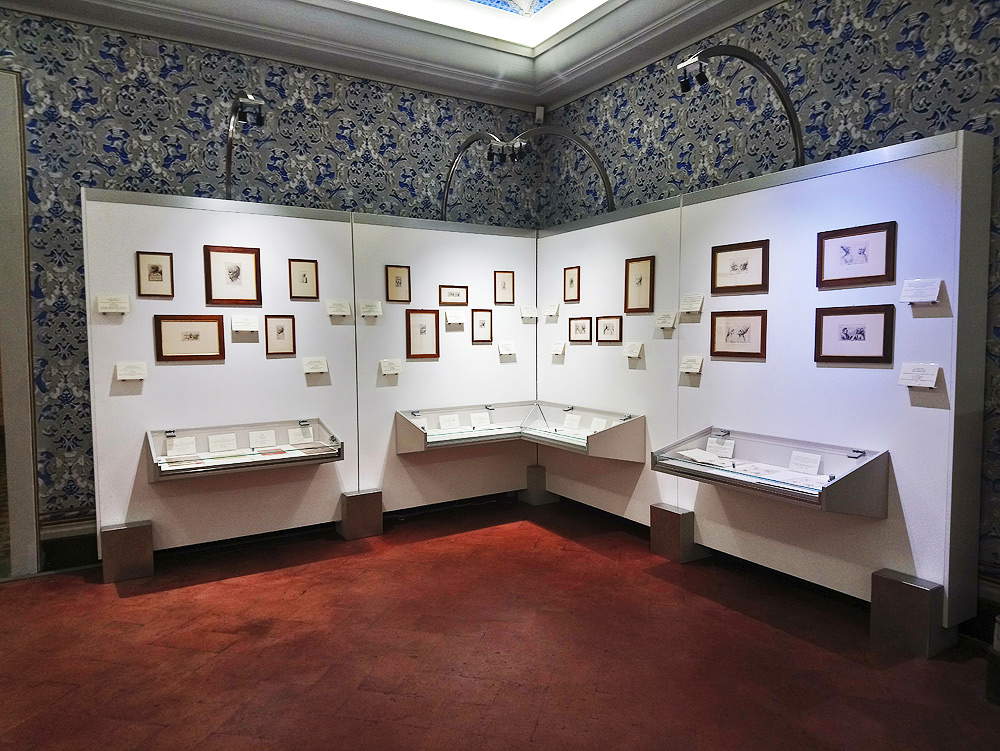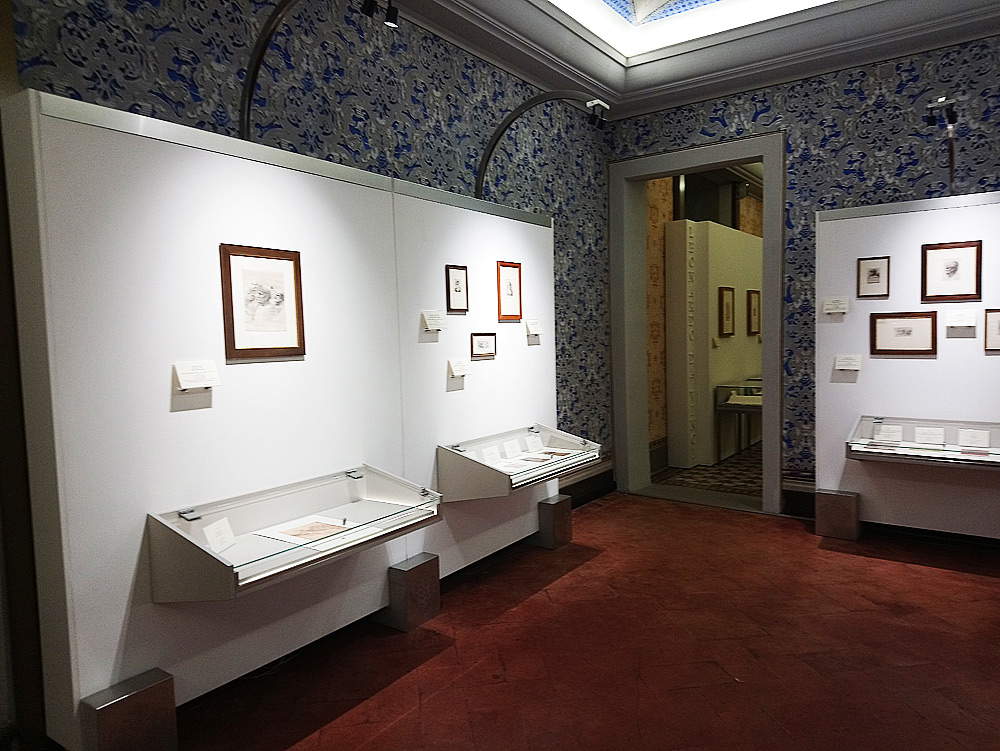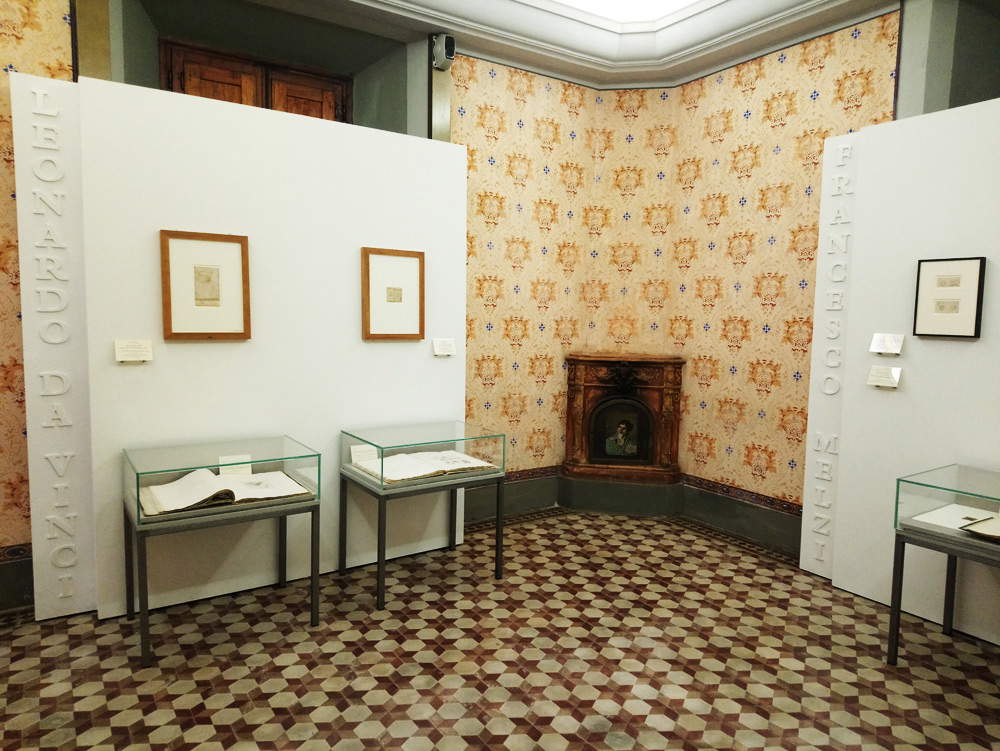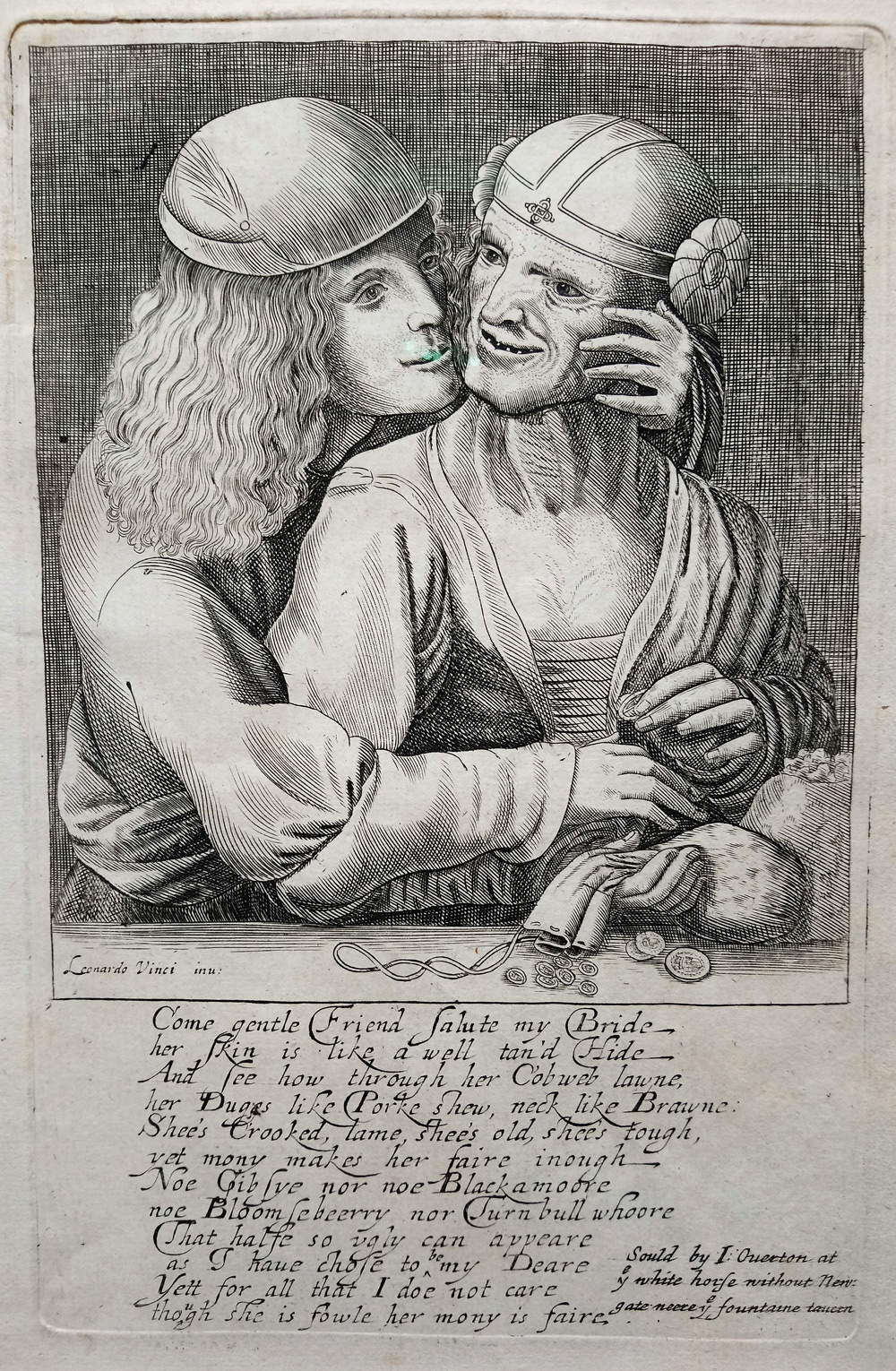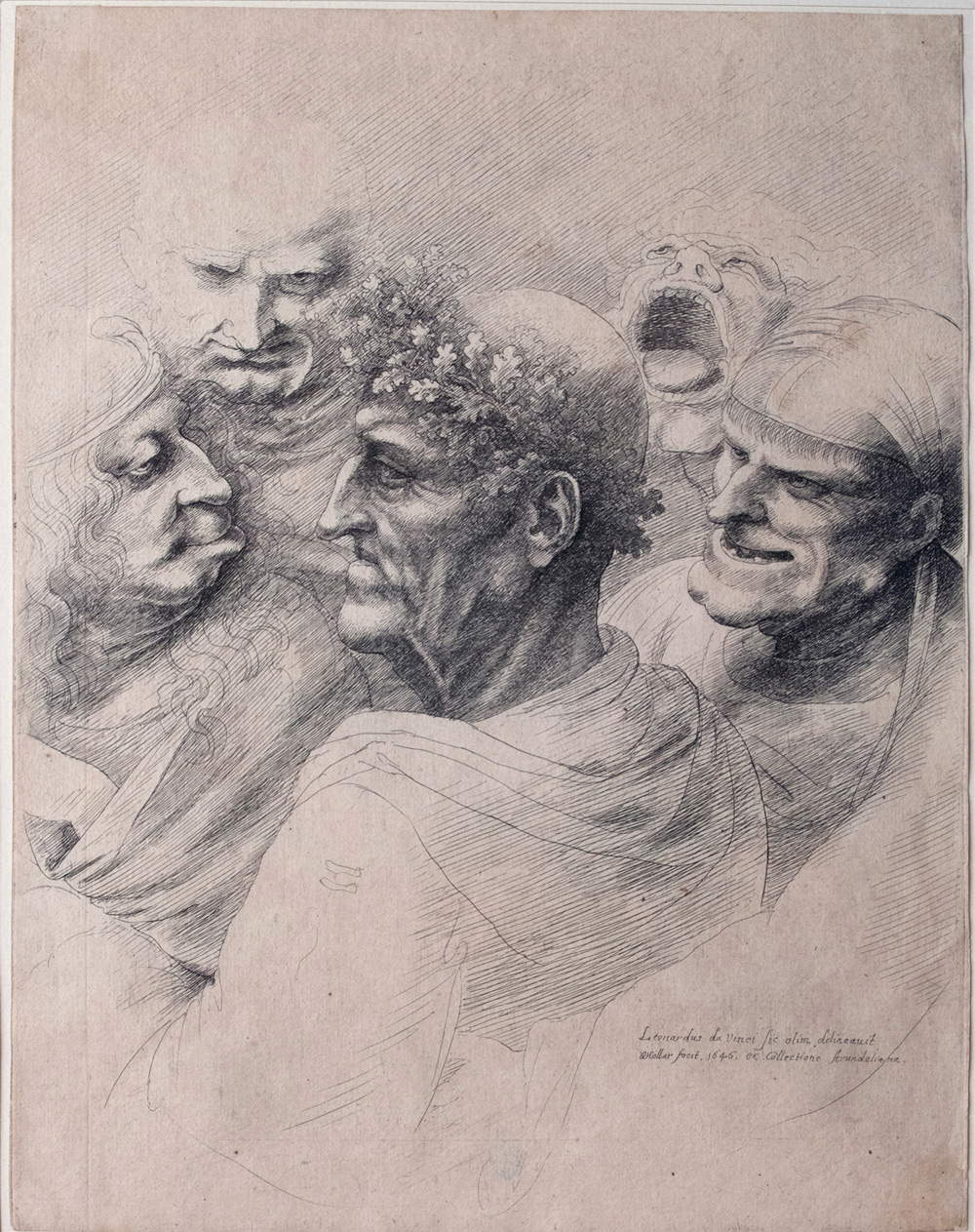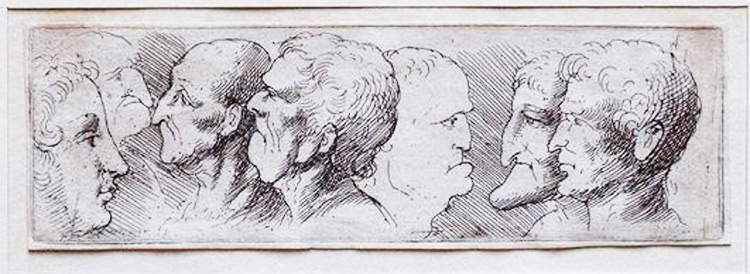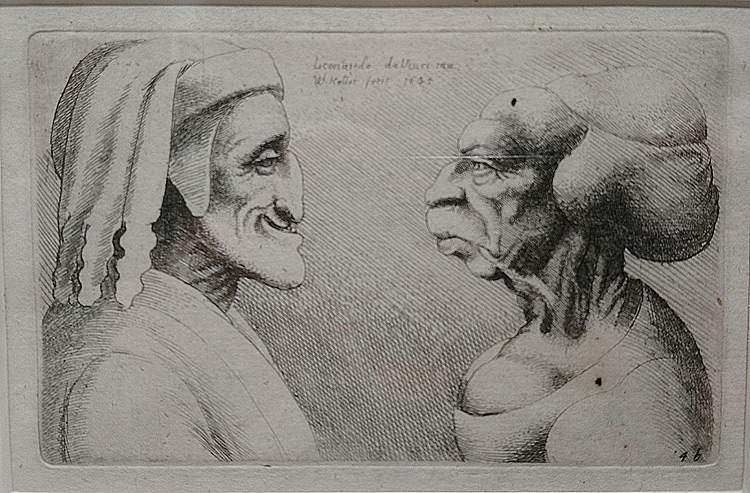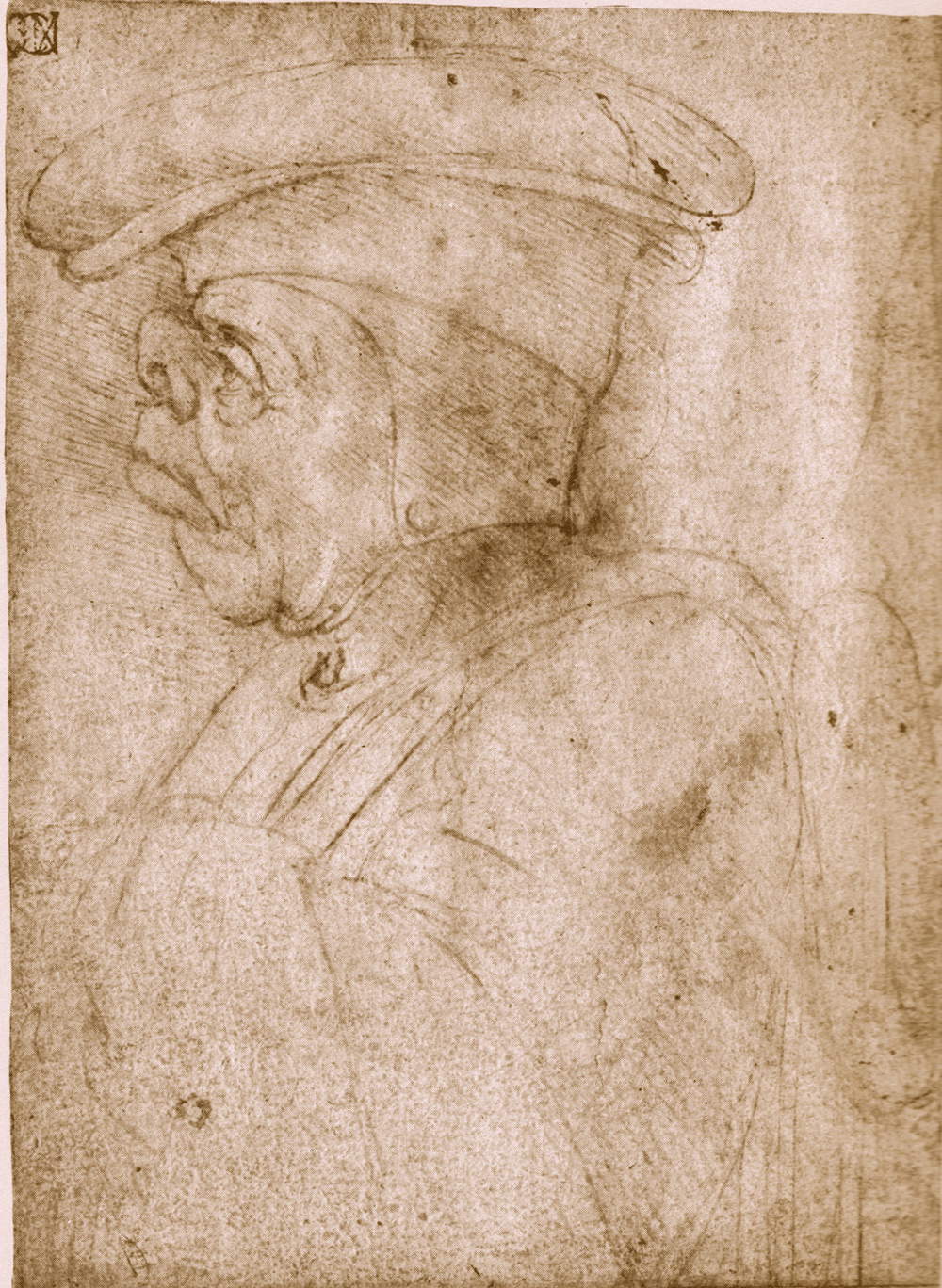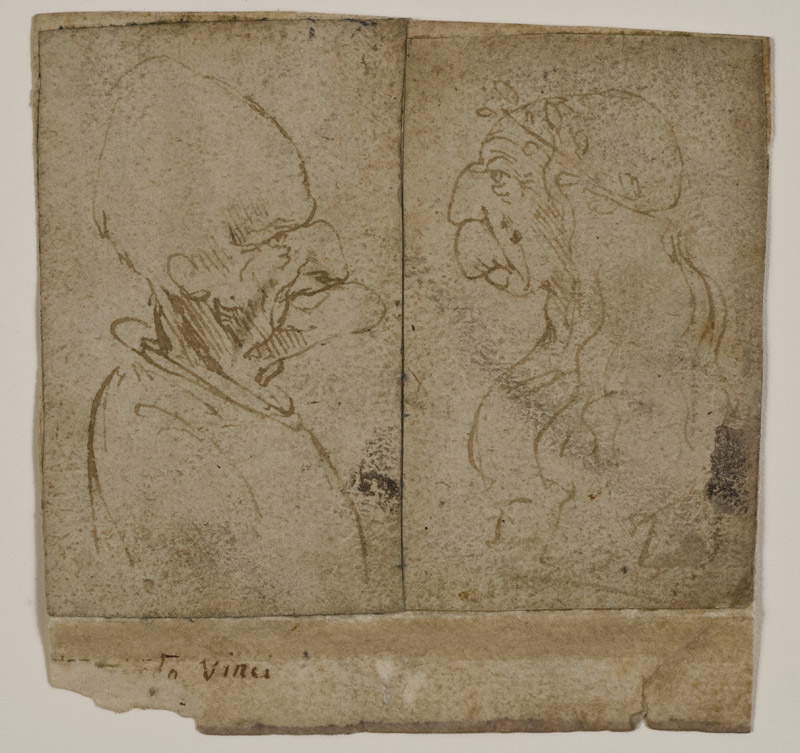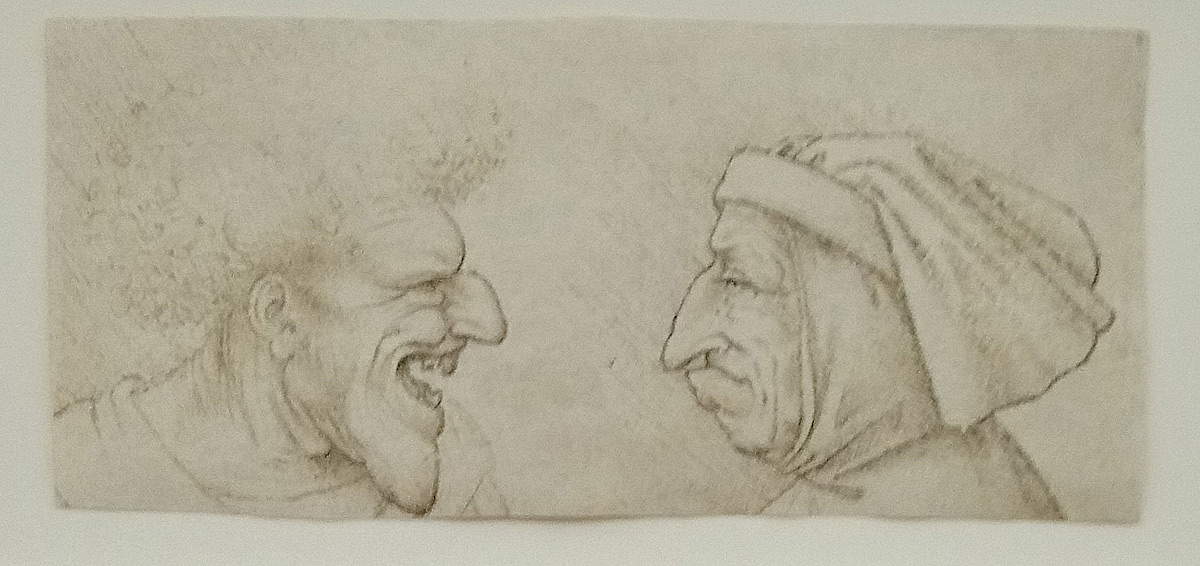by Federico Giannini (Instagram: @federicogiannini1), published on 26/03/2019
Categories: Exhibition reviews
/ Disclaimer
Review of the exhibition "Leonardo designed by Hollar" in Vinci, Rossana and Carlo Pedretti Foundation, Dec. 16, 2018 to May 5, 2019.
He was twenty-nine years old Bohemian engraver Wenceslaus Hollar (Václav Hollar; Prague, 1607 - London, 1677) when, in 1636 in Cologne, he had the opportunity to meet one of England’s richest and most influential men, diplomat Thomas Howard, XXI Earl of Arundel (Finchingfield, 1585 - Padua, 1646): the nobleman was in Germany on a mission on behalf of King Charles I, and the purpose of the trip was to persuade Emperor Ferdinand II to grant the Electorate of the Palatinate to Charles Louis Wittelsbach, nephew of the ruler of England (he was the son of his sister Elizabeth Stuart and Frederick V of the Palatinate, who had been exiled since 1622, and after his death in 1632 English diplomacy had tried hard to get the family to return to rule the Electorate). It was a mission deemed unsuccessful even before it could begin: nevertheless, Lord Arundel accepted the assignment, knowing that by traveling between Holland and Germany he would have many opportunities to increase his already vast art collection. It was during this trip that Lord Arundel met Hollar: the diplomat, in fact, had not only the need to make new acquisitions, but for some time had been planning to publish his collection, and he needed to find good engravers who could try their hand at the task of reproducing the objects in his collection. These included, according to what we learn from an account by the papal ambassador Gregorio Panzani, a guest of Lord Arundel in London in 1637 (it was precisely the count’s return from his mission to Germany that was being celebrated), a large book containing an unspecified number of drawings by Leonardo da Vinci (Vinci, 1452 - Amboise, 1519). We have no idea how Leonardo’s drawings came into Lord Arundel’s possession: they probably came to England via Spain, where they arrived in the 16th century, when the sculptor Pompeo Leoni (Milan, 1533 - Madrid, 1608) purchased many Leonardo drawings from the son of Francesco Melzi, Leonardo’s pupil who had inherited the sheets directly from the master. We know that Lord Arundel, in the course of a mission to Spain, negotiated the purchase of books, but we are not in possession of more specific information: however, it is probable that the works that the count procured in Spain included Leonardo’s drawings (and it is also probable that the latter were purchased at different times).
The meeting between Hollar and Lord Arundel was decisive for the young engraver, and it is not far-fetched to say that it changed his life: Hollar in fact decided to move to London, settled for many years in Lord Arundel’s residence, and even after the nobleman’s death did not leave the United Kingdom and spent almost the rest of his life here (he left England only during the Civil War: the Bohemian, according to biographies, although firm evidence is lacking, joined the Royalist forces but, after the siege of Basing House, was captured and imprisoned, and then managed to escape from prison and repair to Aversa, where Lady Arundel had already taken refuge and where Hollar remained for eight years before returning to London). For several issues, at least until 1666 (thus even after the count’s demise), Hollar relentlessly reproduced Leonardo’s drawings from the Arundel collection. Most of the engravings resulting from Hollar’s work are now preserved at the Royal Library in Windsor, England, but thirty-one of these prints were purchased in the 1950s by Carlo Pedretti (Casalecchio di Reno, 1928 - Lamporecchio, 2018), a distinguished art historian and Leonardo specialist who had always been aware of the value that Hollar’s engravings held in disseminating Leonardo’s ideas in the seventeenth century. Almost all of the engravings collected by Pedretti are this year the focus of the first exhibition of the Rossana and Carlo Pedretti Foundation, an event of great importance not only because, in the heart of Tuscany, and precisely in the Vinci that gave birth to the genius, it inaugurates a new space dedicated to in-depth studies and quality exhibitions, but also because the exhibition itself(Leonardo drawn by Hollar is the brief but exhaustive title) stands as a high-level appointment, on the five-hundredth anniversary of Leonardo’s death.
Meanwhile, it is the first exhibition in Italy dedicated to the figure of Wenceslaus Hollar. Secondly, it is an exhibition that allows us to approach Leonardo’s thought and vision of the world through the important medium of an artist who played an important role in the circulation of his ideas (and consequently we have the opportunity to understand what motivated Hollar’s interest, how the Bohemian engraver approached Leonardo’s works, and how he chose the subjects to reproduce: it should be noted that Hollar’s copies were not entirely faithful to the originals). And again, it is an occasion that enhances the legacy left by the Tuscan genius, and the artist who seized it. In the two rooms of the Vinci exhibition, Hollar’s plates are compared with reproductions of the Leonardo sheets from which they are taken, but there is also no shortage of originals: in particular, from the Biblioteca Ambrosiana come two pen drawings by Leonardo, while arriving from the University of California in Los Angeles are two sheets by Francesco Melzi (Milan, 1491 - Vaprio d’Adda, 1568).
 |
| Image from the exhibition Leonardo drawn by Hollar |
 |
| Image from the exhibition Leonardo drawn by Hollar |
 |
| Image from the exhibition Leonardodrawn by Hollar |
 |
| Image from the exhibition Leonardodrawn by Hollar |
The opening of the exhibition, however, is entrusted to an engraving whose Leonardo original has yet to be traced: it is the ill-matched Couple, dated 1646, and which Hollar claims dates back to an invention by Leonardo. The grotesque drawing, which features a couple consisting of an interested young man and an old woman holding a bag of gold coins in their hands (the composition had a certain fortune: in painting it was taken up by Quentin Metsys for a painting, known as Grotesque Engagement, now preserved in São Paulo, Brazil, and a print by John Overton is also on display in Vinci that includes some verses designed to make explicit the meaning of the subject), introduces the theme of juxtapositions that is often present in Leonardo and returns in several sheets, such as the one at the base of the Five Grotesque Heads engraved by Hollar in 1646: at the center of the composition is what would appear to be a Roman emperor crowned with laurel, surrounded by four bizarre figures in eccentric attitudes, who almost seem to mock him. In similar folios Pedretti has noted Leonardo’s typical propensity to take an interest in “facts of custom and even of politics that could lend themselves to allegorical representations,” which would find justification in a note in which the Vinci artist wrote that the way of describing a figure could constitute a way of bringing out the nature of the subjects represented. It follows that Leonardo’s combinatorial practice often appended profiles of young people with almost Apollonian features to hollowed-out or deformed faces of old men: in etching 15 in the Pedretti Foundation, Hollar combines four profiles from as many Leonardo folios (all preserved in Windsor), but retains Leonardo’s intent to compare (as in folio 12276r in Windsor) characters of extremely different natures. The result is an iconic juxtaposition between an ideal type of beauty and a charged exasperation, functional not only to study the physical decay a body undergoes in the course of life (it should be remembered that the grotesque drawings were also a reflection of Leonardo’s experimentalism) or, wanting to consider the juxtaposition as an allegorical device, to mark in this way the opposite characters of human nature, but also to practice the variety of inventions that Leonardo considered fundamental to the artist’s practice.
These are figurations that then flow into that grotesque which Leonardo largely practiced, for the vast majority during his stay in Lombardy: Toward the resolution to invent with such constancy deformed figures and often bordering on the monstrous must also have pushed him, hypothesizes curator Annalisa Perissa Torrini, the taste for a crude and crude humor that was typical of Sforza circles, the interest of Lombard artists for what was vernacular and popular, the decorative apparatus of the Gothic churches of the North. Yet neither can we overlook the Tuscan substratum, accustomed to mockery, witticisms, and joking lyrics (and in the 15th century in Tuscany the production of burlesque poems flourished) in which the artist was trained. Leonardo’s were not jokes for their own sake, however. They were, meanwhile, a direct emanation of his ideas on the role of the artist, on the variety of things in the world, on the contradictions of the human being: “if the painter wants to see beauties that enamor him,” Leonardo wrote in his Libro di Pittura, "he is lord of generating them, and if he wants to see monstrous things that frighten, or that are buffoonish and laughable, or truly compassionate, he is lord and god of them. And what the importance of the grotesque was in Leonardo’s cognitive activity is well explained by scholar Sara Taglialagamba in her catalog essay devoted precisely to that topic: the grotesque, which in the works of the artist from Vinci is configured as the opposite of balance and harmony but not to oppose beauty, if anything to explain its opposite, has the character of “extraordinary novelty,” writes Taglialagamba, “in stark contrast to the spasmodic search for the codification of beauty and harmonic perfection embodied by homo in circulis,” and is also a clear sign of his creative need, as well as his need to investigate and study. The deformities that connote Leonardo’s figures affect both men and women, are present in the young and the old (although on the latter they are concentrated for the most part), spare no portion of the body, and are often combined to give the subjects even more bestial appearances. Hollar, in all evidence, was greatly fascinated by this singular strand of Leonardo’s drawing, and not only took care to record the individual figures (as is the case in etching 4), but he often found himself bringing together several heads from several sheets in one print (this is the case with etching 18, which includes some profiles that could not be traced in Leonardo’s drawings, and the same is true of the Seven Heads in print 16). This propensity to bring together several grotesque heads in single prints was also motivated by the fact that Hollar must have been aware of the interest such figures aroused. The same is true of the heads Leonardo made with clear satirical intentions, such as the caricature of Dante (who in one sheet appears in profile together with a woman: there is nothing to prevent us from thinking that it might be his beloved Beatrice), a probable symptom, at least according to Michael W. Kwakkelstein, of the artist’s lack of sympathy for the poets (and probably literati in the broader sense) of the Sforza court and beyond. Literati who often burdened Leonardo with his status as an artist who was unfamiliar with Latin, although the question regarding the readings Leonardo accomplished has now been well explored, and we now know that the painter boasted a considerable library.
 |
| Wenceslaus Hollar, Mismatched Couple (1646; etching, 150 x 129 mm the engraving, 170 x 131 mm the print, 154 x 132 mm the sheet; Lamporecchio, Rossana & Carlo Pedretti Foundation, FRCP_S_H.031). Inscriptions: Upper left: “ Leonardo da Vinci inv: WHollar fecit.” Upper right: “ Ex Collectione Arundelliana 1646 ”. P1604 |
 |
| John Overton da Leonardo, Mismatched Couple (engraving; Los Angeles, University of California) |
 |
| Wenceslaus Hollar, Five Grotesque Heads (1646; etching, 228 x 185 mm the engraving, 245 x 186 mm the print, 239 x 186 mm the sheet; Lamporecchio, Rossana & Carlo Pedretti Foundation, FRCP_S_H.020). Inscriptions: Bottom right: “ Leonardus da Vinci sic olim delineavit, | WHollar fecit, 1646. ex Collectione Arundelliana.”
|
 |
| Wenceslaus Hollar, Seven Heads (17th century; etching, 29 x 95 mm the engraving, 31 x 97 mm the print, 32 x 98 mm the sheet; Lamporecchio, Rossana & Carlo Pedretti Foundation, FRCP_S_H.016). P1748 |
 |
| Wenceslaus Hollar, Grotesque head with neck muscles in evidence (17th century; etching, 59 x 50 mm the engraving, 62 x 52 mm the print, 63 x 53 mm the sheet; Lamporecchio, Rossana & Carlo Pedretti Foundation, FRCP_S_H.004). Inscriptions: Bottom right: “ Leonardo da Vinci inv: | W. Hollar fecit ”. P1575 |
 |
| Wenceslaus Hollar, Two affronted grotesque heads, one female and one male with headgear resembling that worn by Dante (1645; etching, 69 x 112 mm the engraving, 71 x 114 mm the print, 80 x 121 mm the mounting window; Lamporecchio, Rossana & Carlo Pedretti Foundation, FRCP_S_H.024). Inscriptions: Top center: “ Leonardo da Vinci inv: | W. Hollar fecit 1645.” Bottom right: “ 4b ”. P1594 |
The second and final room displays the only original drawings by Leonardo on display in Vinci. Both come from the Biblioteca Ambrosiana in Milan: the first is a Head Charged in Profile with Hat, a depiction of a middle-aged man with a forehead totally covered by a large hat, a short, flattened nose, wrinkled skin, excessively protruding lips and a receding chin (all features that, moreover, also return in other drawings by Leonardo). The second drawing, on the other hand, proposes the confronted faces of an elderly man and woman: the former has an unnaturally elongated skull, an excessively pronounced chin, small eyes and a hooked, large, protruding nose. The woman’s mouth resembles a beak, her chin is almost absent, and her forehead low. Next to them are two more drawings, by Francesco Melzi, arriving from California: of particular interest is the one that contrasts a male profile with curly hair, caught in the act of laughing loudly (and in turn reproducing an idea of Leonardo’s, which would later be punctually taken up by Hollar himself) with what appears likely to be a caricature of a poet. One of the main reasons for the interest of Francesco Melzi’s Laughing Head lies in the fact that it is one of the best examples of those grotesque heads traversed by the “motions of the soul” that represented one of the most disruptive innovations in Leonardo’s art, and which the painter considered indispensable in order to animate his works (or rather, to use his own words, in order to ensure that the work of art was not “twice dead,” the first time because an image is still a fiction, and the second time in case the painter was unable to bring out a feeling). The caricature, again, had a practical purpose: to find out how far it was possible to extend a mood, so as to study its features as minutely as possible.
The exhibition closes with Hollar’s prints reproducing Leonardo’s anatomical drawings: the audience has a chance to dwell on a Head taken from anatomical studies, an Anatomical Bust, a Flayed Man’s Head, a Skull seen from the side placed on a book, and a Skull Cutaway. Most interesting is the fact that Hollar never reproduced, in any of his etchings, the notes that Leonardo da Vinci used to accompany the images to illustrate their meaning. Notes that, in the eyes of the 21st century observer, appear inescapable and inextricably linked to the figures (Leonardo’s right-to-left writing has almost entered the collective imagination). To explain why this choice was made, scholar Margherita Melani hypothesizes, "it cannot be ruled out that the Bohemian engraver had already sensed that Leonardo’s drawings had their own appeal, their own independent fortune, even if decontextualized and without any indication of the source. Hollar in short translates Leonardo’s individual studies into engravings, transforming them into autonomous subjects without ever failing in the dimensional fidelity of the prototype" (Hollar’s reproductions, in fact, are always on a 1:1 scale). And the fortune met by prints reproducing Leonardo’s drawings may also explain why Wenceslaus Hollar had continued to produce them even after Lord Arundel’s passing: evidently, the artist had found in the trade of such prints a source of livelihood. And this might also explain why Hollar copied certain subjects more frequently than others: it will be worth mentioning that the Carlo and Rossana Pedretti Foundation’s exhibition displays exclusively etchings reproducing figure drawings (Hollar, in the three series of etchings from the Arundel collection, had reproduced only portraits and heads). In conclusion, the exhibition ends with a number of volumes testifying to the fortune of Leonardo’s drawings: standing out above all, in terms of importance, is the edition of the Recueil de charges et de têtes by the Count of Caylus from the Biblioteca Leonardiana in Vinci, a collection of prints reproducing Leonardo’s grotesque heads, published in Paris in 1757 (an essay in the catalog is moreover devoted to the book).
 |
| Leonardo da Vinci, Grotesque Male Head (15 x 11 cm; Milan, Biblioteca Ambrosiana, F 274 inf. no. 53) |
 |
| Leonardo da Vinci, Grotesque Couple (77 x 4.7 mm and 76 x 47 mm; Milan, Biblioteca Ambrosiana, F 274 inf. no. 27a and F 274 inf. no. 27b) |
 |
| Francesco Melzi, Pair of Grotesque Heads (Los Angeles, University of California) |
 |
| Wenceslaus Hollar, Skull seen at the side placed on a book (1645; etching, 70 x 90 mm the engraving, 79 x 93 mm the print, 80 x 94 mm the sheet; , Lamporecchio, Rossana & Carlo Pedretti Foundation, FRCP_S_H.008). Inscriptions: Upper right: “ Leonardo da Vinci in: | W. Hollar fecit ”. Upper right “ 1645 ”. P1774.
|
 |
| Wenceslaus Hollar, Anatomical Bust (1651; etching, 119 x 62 mm the engraving, 125 x 65 mm the impression, 130 x 68 mm the sheet; Lamporecchio, Rossana & Carlo Pedretti Foundation, FRCP_S_H.002). Inscriptions: Upper left: “ Leonardo da Vinci | inv.” Upper right: “ W. Hollar fecit | 1651 | ex. Collectione Arund: ”. P1771 |
Perhaps it is because this is the debut exhibition, but Leonardo designed by Hollar is not exempt from some flaws: one struggles to find a unified path in the exhibition (the task is, if anything, left to the visitor’s intuition and interpretation), the apparatuses are very meager, and the layout in the two rooms is not uniform. The shortcomings that mainly concern the apparatuses are, however, compensated for by a catalog that is also an interesting popular tool: the essays focus mainly on the aspect of the grotesque in Leonardo, and through a very clear exposition of the subject, combined with a good iconographic set, they also succeed in presenting themselves as texts not exclusively reserved for an audience of specialists. The result, however, is very positive, not least because the exhibition offers visitors the opportunity to learn about a heritage, that of Hollar’s engravings in the Rossana and Carlo Pedretti Foundation, which had never before been exhibited to the public, and it also stands as a clear manifesto of the lines that will guide the Foundation’s activities: valuable and anything but predictable exhibitions, which will take place in the brand new venue of Villa Baronti-Pezzatini, a nineteenth-century building totally renovated for the occasion, and which consists of two separate bodies (one enters a courtyard from which one enters the annexe that houses the ticket office, bookshop and bar, and the main building where the rooms for the exhibitions, the conference room, and the rooms with the multimedia apparatus have been prepared). A very promising start, in essence.
Warning: the translation into English of the original Italian article was created using automatic tools.
We undertake to review all articles, but we do not guarantee the total absence of inaccuracies in the translation due to the program. You can
find the original by clicking on the ITA button. If you find any mistake,please contact us.
